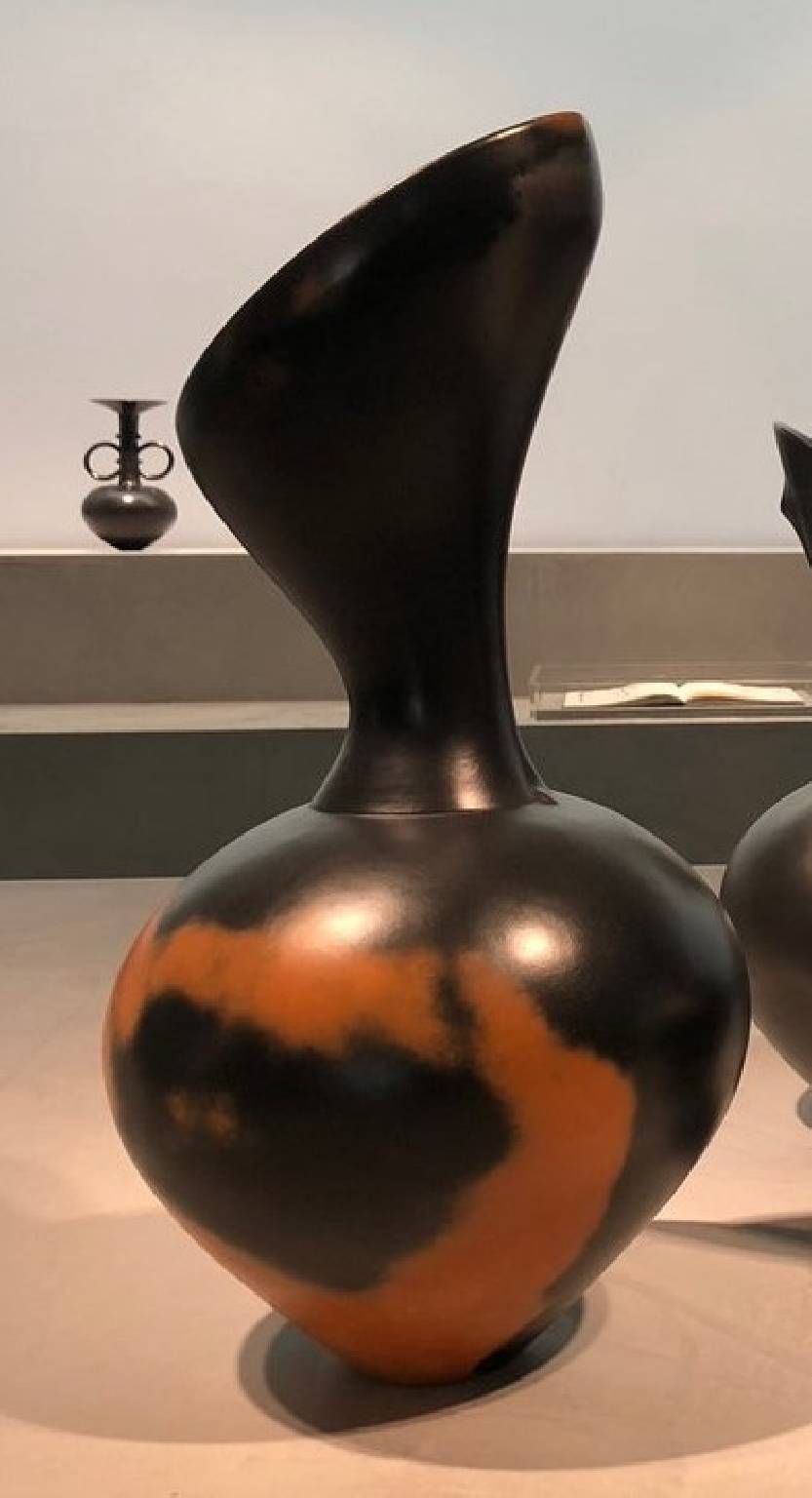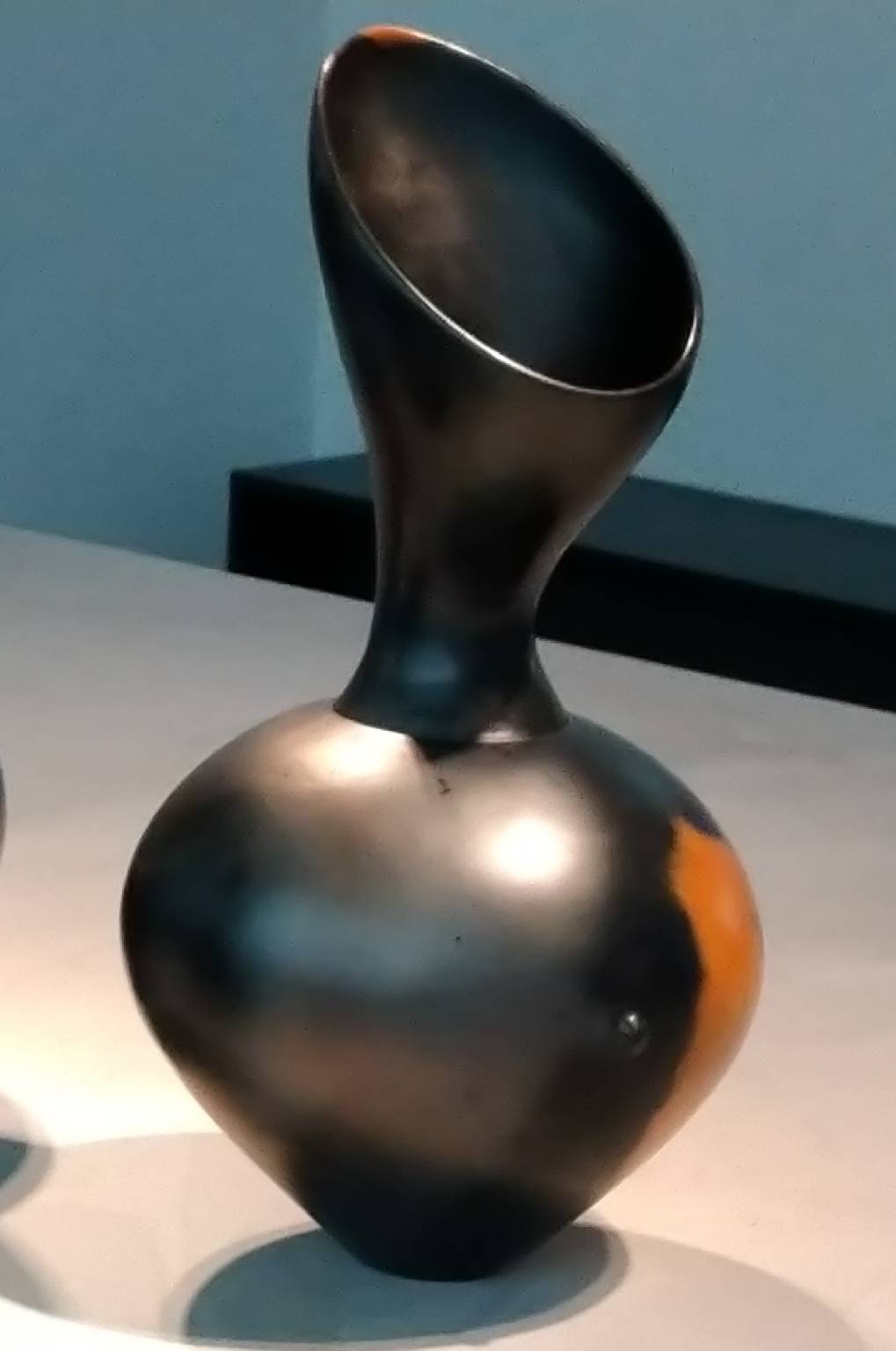© Magdalene Anyango Namakhiya Odundo. Photo: Louise Darby.
© Magdalene Anyango Namakhiya Odundo.
© Magdalene Anyango Namakhiya Odundo.
© Magdalene Anyango Namakhiya Odundo.
Asymmetric I is an outstanding example of the work of Magdalene Odundo, one of the most important studio potters working in Britain today.
Odundo was born in Kenya and moved to Britain in 1971 to attend Cambridge College of Art. In 1976 she gained a degree in Ceramics with Printmaking and Photography from West Surrey College of Art, and followed this in 1982 with an MA from the Royal College of Art.
In the mid-1970s Odundo travelled to Nigeria and Kenya to study traditional hand-built pottery techniques, methods she continues to use in works such as Asymmetric I. After building the piece, Odundo uses an ancient technique of coating the vessel with a terra sigillata slip and burnishing the surface with stones and polishing tools. Each piece is then fired in a gas kiln in which the oxygen levels are controlled to keep the surface bright orange, or to turn it iridescent black. Multiple firings create a dynamic interaction between the two colours.
By drawing on techniques widely associated with women potters throughout Africa and across the world, Odundo explores her identity both as a female artist and as a woman of the African diaspora. Her vessels are also notable for their references to the female body, and for their associations with the spiritual and ritual potency of traditional clay pots.
Asymmetric I now becomes an important addition to National Museum Cardiff's holdings of contemporary ceramics, as well as a significant step in its attempts to address the underrepresentation of Black, Asian and Minority Ethnic artists in its collection.
Provenance
The artistExhibitions: Magdalene Odundo: The Journey of Things, The Hepworth, Wakefield, 16 February – 2 June 2019, and Sainsbury Centre, Norwich, 3 August – 15 December 2019Literature: Andrew Bonacina (ed.), Magdalene Odundo: The Journey of T



